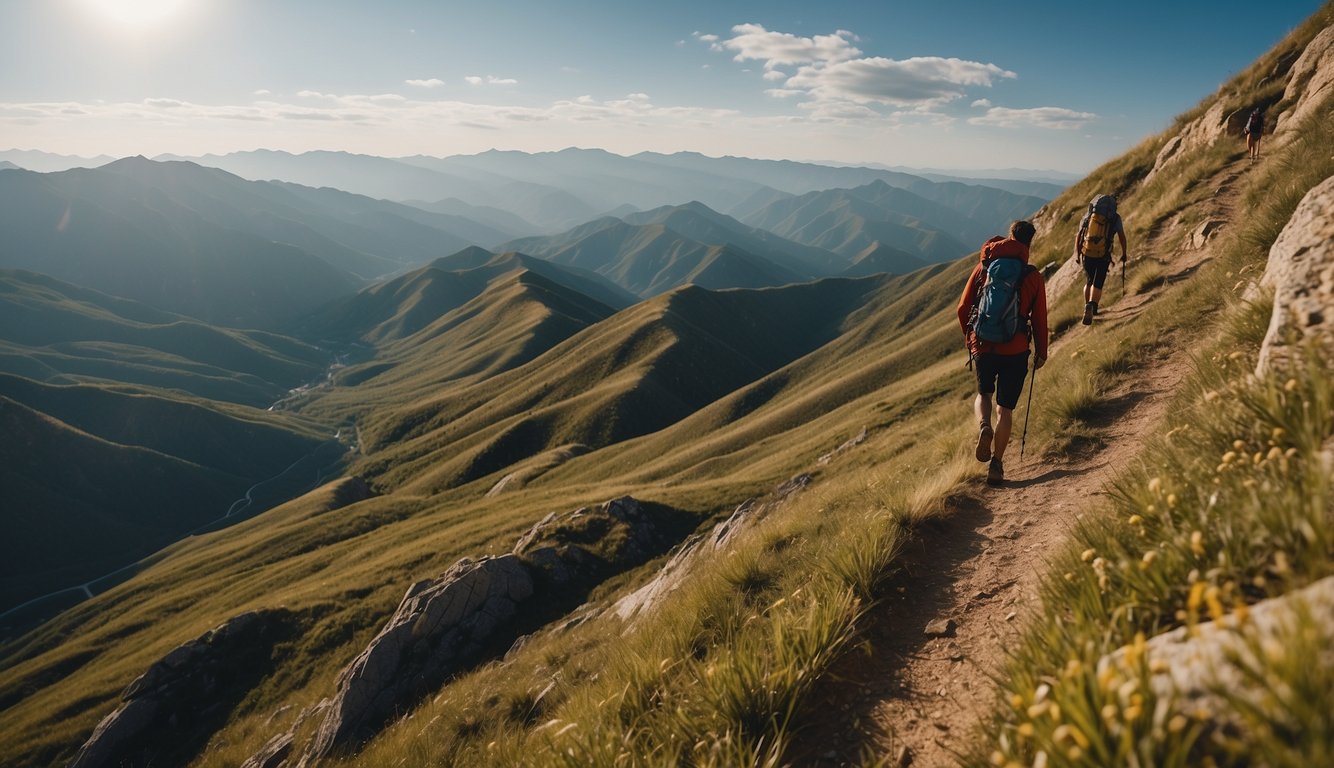If you’re an avid hiker, you’ve probably come across switchbacks on your trail. Switchbacks are a series of zigzagging turns on a trail that help hikers ascend or descend steep slopes in a more gradual manner. Instead of tackling a steep incline head-on, switchbacks add distance to the trail by taking a longer, meandering route.

Understanding switchbacks in hiking is crucial for any hiker, whether you’re a beginner or an experienced hiker. Switchbacks are not only an effective way to tackle steep slopes, but they also help prevent erosion and minimize damage to vegetation and the trail itself. Knowing how to navigate switchbacks can also make your hike less strenuous and more enjoyable. In this article, I will explain what switchbacks are, their benefits, and how to tackle them with ease.
The Essentials of Switchbacks
Defining Switchbacks and Their Purpose
When hiking up a steep slope, switchbacks can be a lifesaver. A switchback is a trail that cuts back on itself in a zigzag pattern, allowing hikers to ascend or descend steep slopes in a more gradual manner. This means less strain on your legs, lungs, and heart, and more enjoyment of the journey. Switchbacks have been in use since ancient times, as they allow safer and easier travel up mountain ranges especially when transporting goods.
The purpose of switchbacks is to make hiking up or down a steep slope much more manageable. Instead of trudging straight up or down the hill, they allow you to take a more gradual approach which means less exertion and more safety. Switchbacks also help prevent erosion on the trail, making it more accessible for future hikers.
Planning Your Hike: Preparation and Gear
Before embarking on a hike with switchbacks, it is important to prepare properly. This means having the right gear and supplies. Here are some essentials to consider:
- Hiking boots: Proper footwear is essential to prevent slipping and provide good traction. Make sure your boots are comfortable and have good ankle support.
- Trekking poles: These can help with balance and provide extra support, especially on steep slopes.
- Backpack: A good backpack is necessary to carry all your gear and supplies. Make sure it fits well and has a waist strap to distribute the weight.
- Hydration: Bring plenty of water to stay hydrated, especially on hot days. Consider bringing a water filtration system if you plan to refill from streams.
- Food: Bring snacks and meals to keep your energy levels up. Pack lightweight and high-energy foods such as nuts, dried fruit, and energy bars.
- Map: Always bring a map and compass to navigate the trail. Make sure you know the route and any potential hazards.
- Safety: Consider bringing a first aid kit and emergency whistle. Let someone know your hiking plans and expected return time.
By understanding the purpose and benefits of switchbacks and properly preparing for your hike, you can enjoy a safe and enjoyable journey up steep slopes.
Navigating and Protecting the Trail
As I hike along switchback trails, I make sure to use proper techniques to protect the trail and the natural environment around it. Here are some techniques and considerations I keep in mind:
Techniques for Hiking on Switchbacks
When hiking on switchbacks, I take smaller steps and place my feet securely on the trail. This helps me maintain balance and avoid slipping or sliding on the trail. I also try to maintain a steady pace and avoid rushing, which can lead to accidents or injuries.
Another technique that I use is to zigzag up the trail, following the switchbacks. This helps me conserve energy and avoid steep climbs. I also try to stay on the designated trail and avoid shortcuts, which can damage the surrounding environment.
Environmental Considerations and Trail Etiquette
As a hiker, I am responsible for protecting the natural environment and following Leave No Trace principles. This means that I pack out all my trash, avoid disturbing wildlife and flora, and stay on designated trails.
To protect the trail and prevent soil erosion, I avoid hiking on muddy or wet trails, especially during rainy or snowy weather. I also avoid cutting switchbacks or creating new trails, which can damage the surrounding environment and lead to soil erosion.
In addition, I follow trail etiquette by yielding to other hikers, especially those going uphill. I also avoid making excessive noise or disturbing the natural environment, which can disrupt wildlife and other hikers. By following these techniques and considerations, I can enjoy switchback trails while also protecting the natural environment and preserving them for future generations to enjoy.

